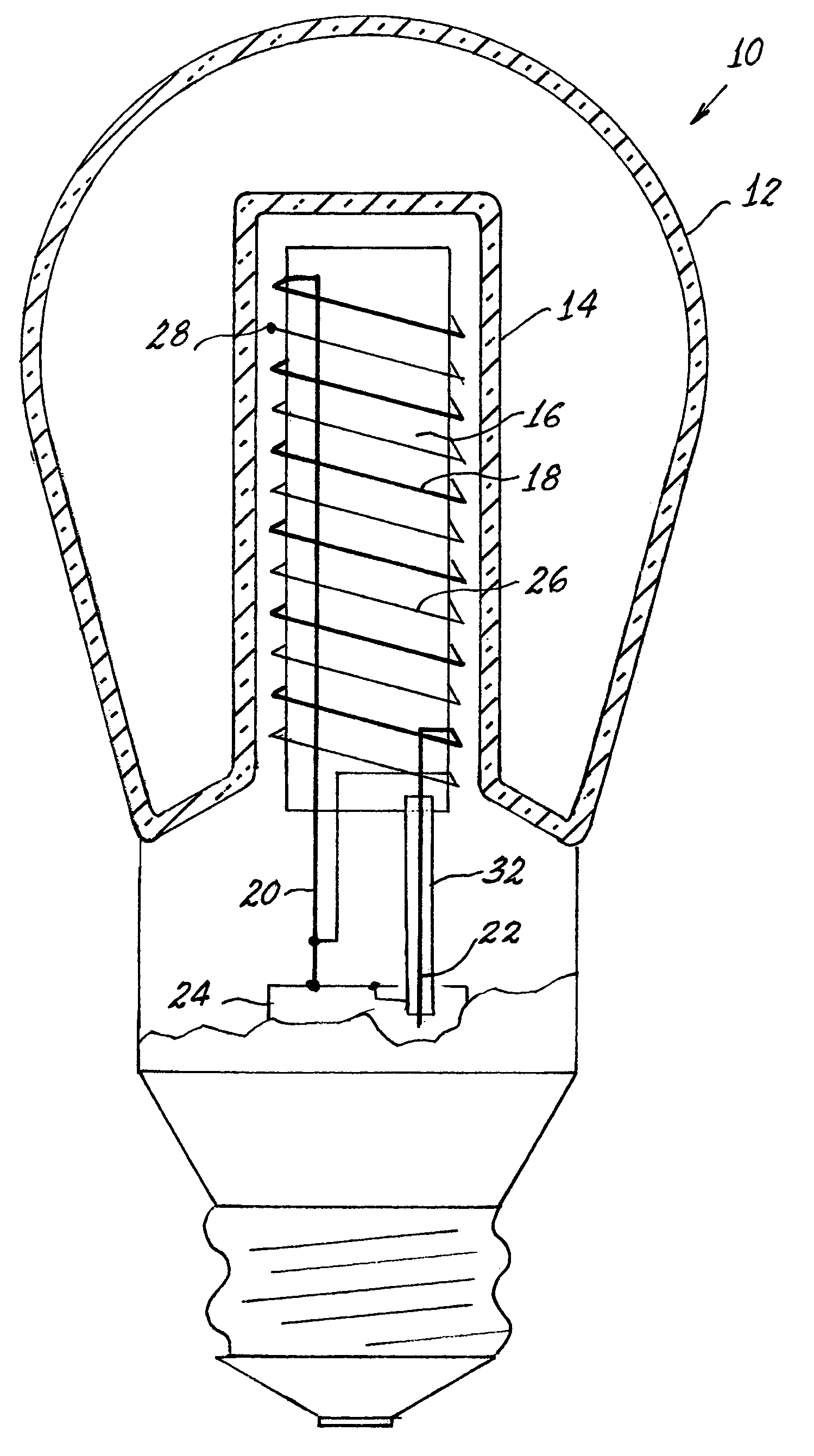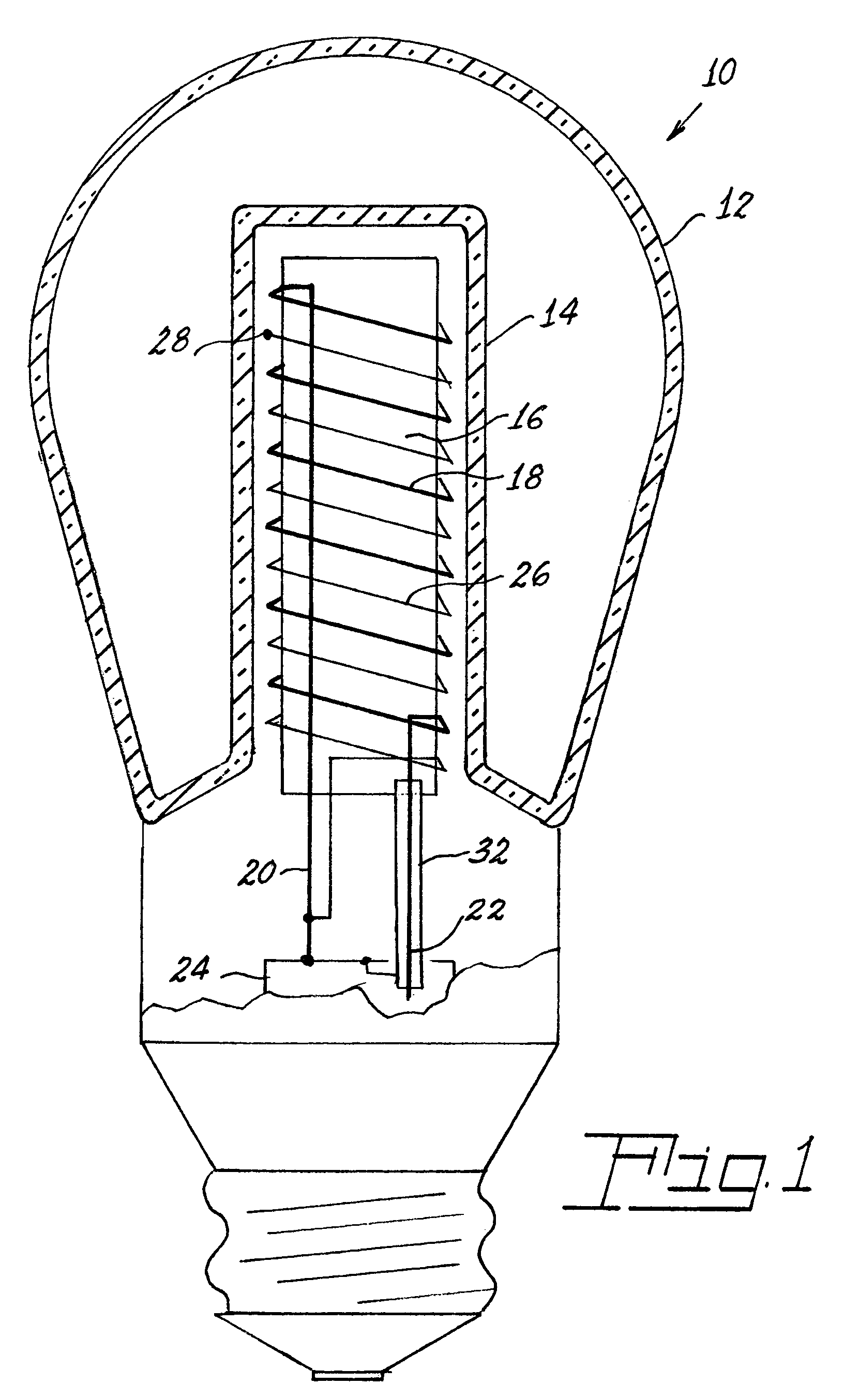RF induction lamp with reduced electromagnetic interference
a technology of electromagnetic interference and induction lamp, which is applied in the direction of gas-filled discharge tubes, magnetic discharge control, gaseous cathodes, etc., can solve the problems of reducing the efficiency of lamps, limiting the places where lamps can be used, and increasing the cost of lamps, so as to improve the electrostatic symmetry of lamps
- Summary
- Abstract
- Description
- Claims
- Application Information
AI Technical Summary
Benefits of technology
Problems solved by technology
Method used
Image
Examples
Embodiment Construction
[0018]For a better understanding of the present invention, together with other and further objects, advantages and capabilities thereof, reference is made to the following disclosure and appended claims taken in conjunction with the above-described drawings.
[0019]Referring now to the drawings with greater particularity, there is shown in FIG. 1 an electrodeless fluorescent lamp 10 having an envelope 12 that includes a chamber 14. A core 16 of magnetic material, preferably ferrite, is positioned in the chamber 14 and has a first winding 18 surrounding the core and having first and second lead-in wires 20, 22, attached to a high frequency voltage supply or ballast 24. A second winding 26 surrounds the core 16, respective turns of the second winding 26 being located adjacent turns of the first winding 18 and electrically insulated therefrom. The second winding 26 has a free end 28 and has another end 30 connected to one of the lead-in wires, for example 20. A braided sheath 32 (shown s...
PUM
 Login to View More
Login to View More Abstract
Description
Claims
Application Information
 Login to View More
Login to View More - R&D
- Intellectual Property
- Life Sciences
- Materials
- Tech Scout
- Unparalleled Data Quality
- Higher Quality Content
- 60% Fewer Hallucinations
Browse by: Latest US Patents, China's latest patents, Technical Efficacy Thesaurus, Application Domain, Technology Topic, Popular Technical Reports.
© 2025 PatSnap. All rights reserved.Legal|Privacy policy|Modern Slavery Act Transparency Statement|Sitemap|About US| Contact US: help@patsnap.com



